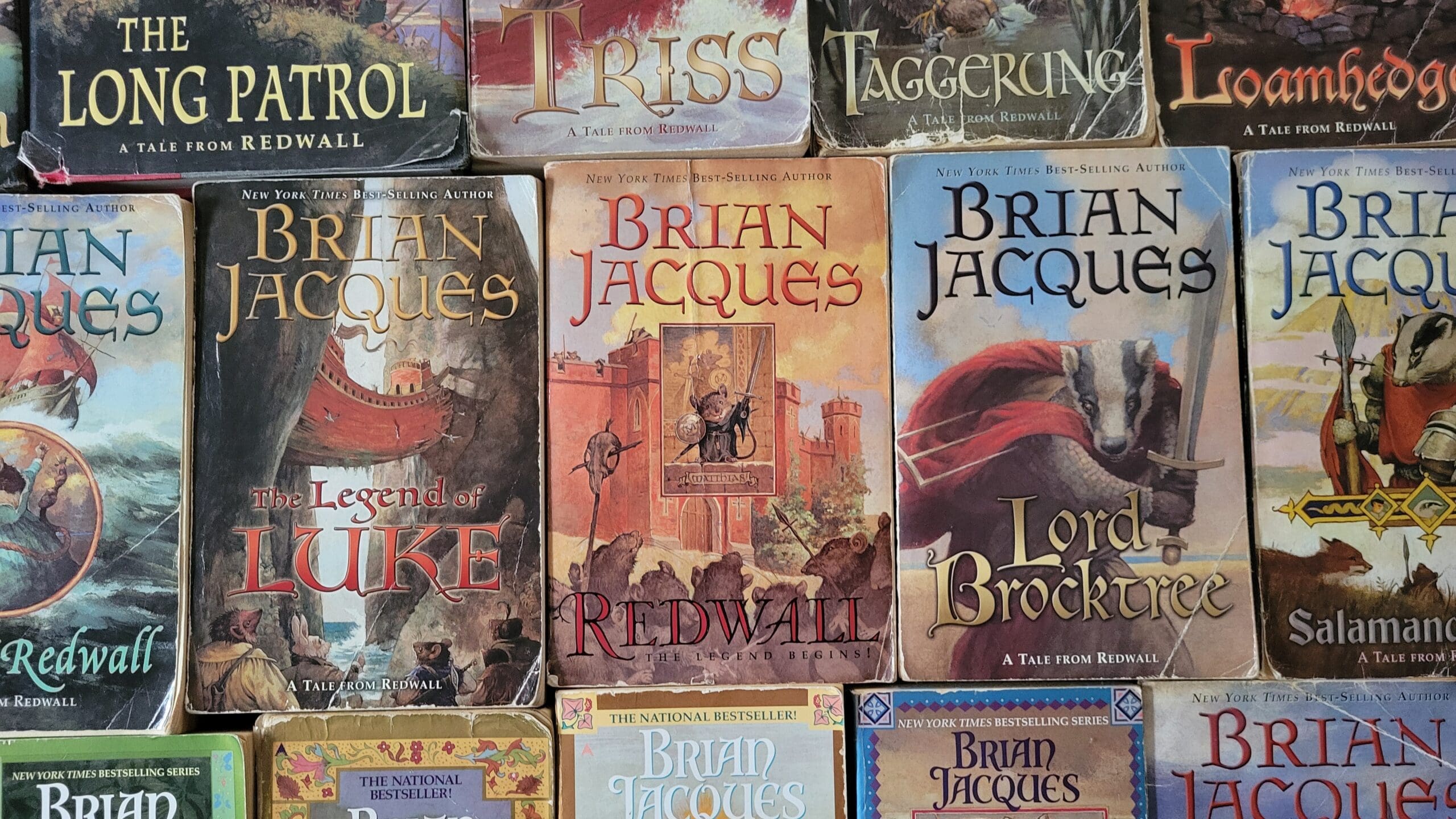I’m so excited to start this series of summer reading reviews! Before we really dive into it, I wanted to explain exactly what I’ll be doing here.
Throughout the summer — and probably into the fall, since we’re nearing the end of summer — I’m going to release a series of book recommendations. Most of these will follow a general theme, like my top 10 sci-fi recommendations, or my favorite books about superheroes. A few might focus on a single, specific book, but most are going to cover several books.
Now, the biggest question I assume many of you might have is “will these reviews have spoilers?” Well, there may be some of what I would consider light spoilers. I’m going to do my best to avoid what I would consider serious spoilers — major plot points, secret backstories, etc. — but, to give a good review, I’ll have to mention some details from the book. My goal is to give you enough information to explain why I love the books I’m writing about and help you decide whether you’d like to read them yourself, without ruining the story for you.
So, if you’re the type of person who avoids reading the back of a book because you’re afraid it will give away too much, you should probably skip these reviews.
I know that a lot of our audience has kids, so I’m also going to try to give age-based recommendations, but, honestly, my parents just turned me loose in the library when I was a kid. We all have different standards for child appropriateness, so if you are concerned, I encourage you to read the book yourself.
Now, without further ado, let’s get started.
Since this is the first review I’m writing, I decided it would make sense to start us off with “Redwall,” the series that first inspired my love of reading and desire to write for me.
Some of my earliest memories as a child are listening to my father read aloud to us from “Redwall” after dinner.
Redwall is a series set in a world of anthropomorphic woodland animals, and was the clear inspiration for many other similar series, games and stories, like the boardgame Everdell and the graphic novel and tabletop roleplaying game, Mouse Guard. Though there were certainly several books that came before it, such as “Watership Down,” I think “Redwall” was the series that really popularized the concept.
The first book in the series, “Redwall,” tells the story of Matthias, a young mouse living at Redwall Abbey, who must rise up to become a warrior and defend his home against the evil rat, Cluny the Scourge.
The story is an interesting mix of mystery and adventure as Matthias works with his friends to solve a series of puzzles to find a hidden relic that he believes can help to defend his home.
Throughout the story, he dreams of an ancient warrior, Martin the Warrior, who was one of the founders of Redwall Abbey and its champion in times of danger.
The first book is somewhat different from the others, because it’s clear that the author, Brian Jacques, hadn’t fully decided on certain elements of the world. In “Redwall,” we see a mix of buildings and structures built by woodland animals — such as mice, voles, shrews, foxes, hares, badgers, otters and squirrels — alongside oversized structures that would seem to have been built by humans. There is also a barn cat, the size of, well, a cat in comparison to the mice that make up most of the characters in the first book. Later in the series, we’ll meet wildcats that are closer in size to the other woodland creatures as Brian Jacques more firmly sets his world apart from our own.
For the most part, setting aside the fact that all of the characters are woodland animals, the series is relatively grounded and has very few strong fantasy elements. The fantasy elements that are present, however, are integral to the story. Primarily, these revolve around Martin, who, throughout the series, appears in the dreams of the main characters to offer guidance, or occasionally haunts the dreams of the villains. There are also a few examples of seers who can see glimpses of the future and some objects with mystical properties, such as the sword of Martin the Warrior, which is supernaturally sharp and durable.
Martin is also the traditional quest-giver in the series. Usually, towards the beginning of the book, a character will have Martin’s spirit affect them and they’ll either say a prophecy out loud to others or dream of it.
In total, there are 22 books in the “Redwall” series. All of them feature Redwall Abbey, with the exception of a few which take place prior to the Abbey’s construction. It’s rarely clear exactly how much time has passed between each iteration of the story. Part of what I love about “Redwall” is the layered lore of it. Sometimes, a descendent of an old character will crop up in a story and surprise you. In other cases, you’ll have a more long-lived character survive several generations — all of the badgers live longer than anyone else in this series — and, occasionally old characters will gift advice to the heroes either through dreams or old writings.
Each time a previous character is referenced, it helps to build up that rich lore. Most of the series I’ve read involve following a character or a group of characters across several books. What makes “Redwall” so unique is that instead of following a character, you’re following a place. Ultimately, Redwall is a series of stories about Redwall Abbey and all of the characters that protect it and call it home over generations of storytelling.
Now, I’d be doing the series a disservice if I didn’t mention the food. In the stories, Redwall Abbey is well-known as having the best food in the land. Jacques always created amazing descriptions of the food that left readers longing for a chance to visit the mythical abbey themselves. It’s hard not to want to get a taste of the flaky pastries and fizzy October ale that he so thoroughly described throughout the series.
Eventually, he published “The Redwall Cookbook,” which includes a short illustrated story alongside some of the more famous dishes he wrote about in his books. I have it, and can attest that the food is absolutely delicious.
I could talk all day about “Redwall,” how much I love it and how it influenced me as a writer, but I’ll close this one out with a quick list of my favorite books in the series and some final recommendations on who should read this series.
The Long Patrol: This is by far my favorite book in the series. At this point, I’ve read it over a dozen times and consider it something of a comfort read when I want something nice and familiar. It’s one of the more warlike stories in the series, focusing on the group of hares whose job is to defend the Western Shores against raiders.
Mariel of Redwall: This was a favorite of both myself and my sister. This story focuses on Mariel, a young mouse who loses her memory in an accident and reinvents herself as a fierce fighter, determined to seek vengeance on those that took her father away from her.
Rakkety Tam: What’s not to love about a Scottish squirrel named Rakkety Tam MacBurl going on a quest to earn his freedom from the squirrel lord he pledged his sword to? Rakkety Tam is one of my favorite characters in the Redwall series and I love his story and all of the supporting characters attached to it.
Redwall: Brian Jacques definitely grows and improves as a writer as the series continues, but this first book is still a classic. The thing that cements it most in my mind is the villain, Cluny. He’s the type of villain that has absolutely no redeeming qualities, but despite not being even remotely relatable, he’s excellent because of how villainous he is. Cluny is designed to be the stuff of nightmares, and I think he delivers as one of the best villains in the series.
One of the nice things about the Redwall series is that you don’t have to read it in order. If you find one and decide to read it, you should be able to follow along just fine, with a few exceptions. I do recommend that you start at the beginning and read through them all, but if you want to just read one and see how you like it, those are my top recommendations.
As for who I recommend this to, I’d recommend this series to just about anyone! It was written for kids, so adjust your expectations accordingly. It’s hard for me to say any particular age. My dad started reading the series to us when we were really young, but it does have a fair bit of violence and death.
There was a TV show for “Redwall,” and they rated it as being appropriate for kids 7 and older. The books are slightly more violent than the show, since they do describe various characters dying, not to mention one of the villains in the series leads an army of cannibals.
But, it never gets gory in its descriptions. I think the question is whether you are comfortable with your kids dealing with the concept of death in fiction. If they are old enough to handle that, then I think Redwall is a series that every child could benefit from reading. At its core, “Redwall” is a story about adventure, friendship, loyalty and defending those who can’t defend themselves. The morals of the stories are certainly ones that I think all kids should learn.
If you’re older, I think these series are still worth reading, but I can’t deny that, for me, there is a heavy layer of nostalgia tied up in them. I still reread them, but, for me, reading the books takes me back to some of my happiest childhood memories.
Still, despite my personal bias, I do think that this is a series that can be enjoyed by children and adults alike. Sometimes, all you want is to read a simple adventure story where the difference between good and evil is clearly drawn. A story where there will be hardship along the way, you know that the good guys will triumph in the end.
I’ll end this review here. I hope you all enjoyed it! If you do decide to read “Redwall,” shoot me an email and let me know. I’d love to hear your thoughts.
Want to get early access to columns, unique newsletters and help keep The Sunrise News active? Then support us on Ko-Fi!



